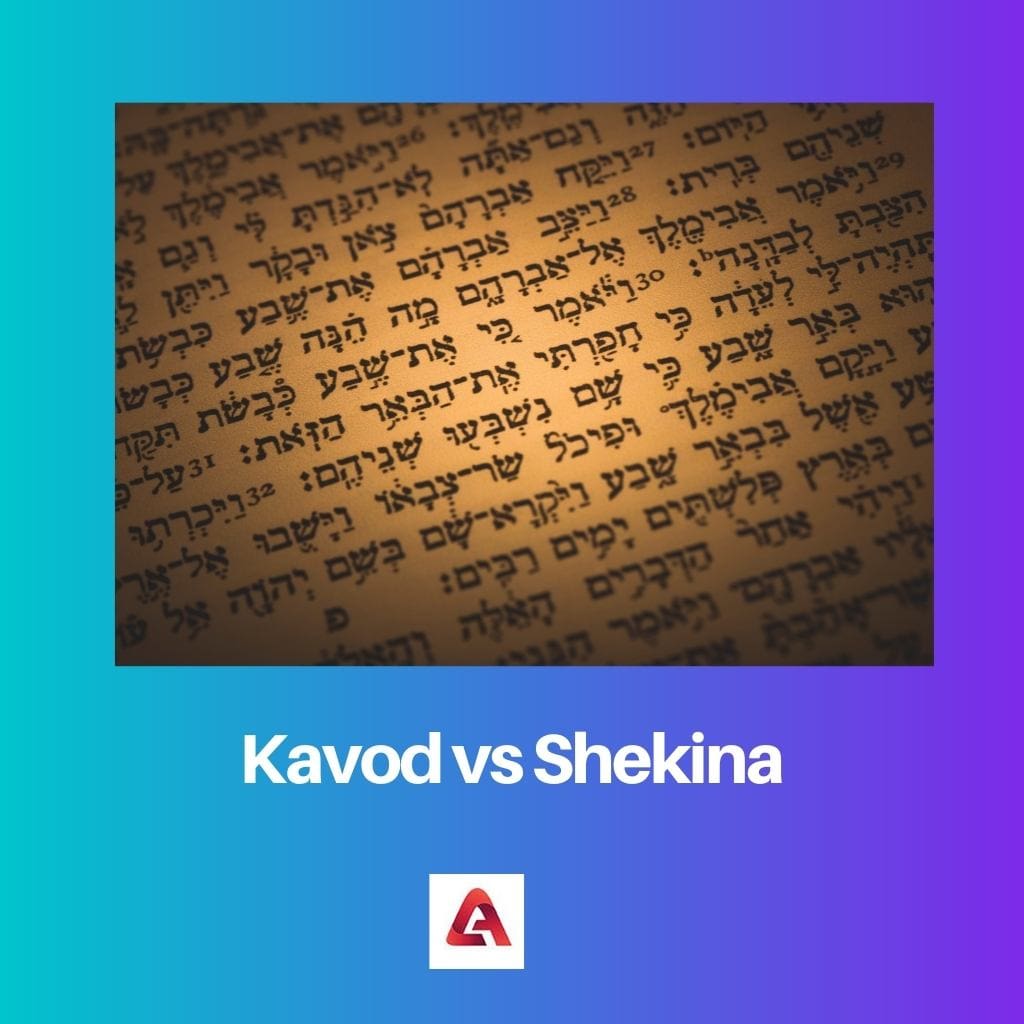God is omnipresent and omnipotent. There are several meanings, attributes and forms associated with God.
Figuring out the attributes and forms of god is not that easy for humans to accomplish. Various religions have different beliefs connected with the attributes of god.
Both Christianity and Judaism have a thing with the Bible. The holy book is divided into the Old Testament and the New Testament based on the time of their composition.
Kavod reveals the beautiful grace and radiance of god. It is a term that showcases something heavy which glorifies god’s grace.
Shekina, on the other hand, is nowhere mentioned in the Bible. It signifies the relationship between God and humans.
Key Takeaways
- Kavod and Shekina are two Hebrew terms used in Jewish tradition to describe the presence of God.
- Kavod refers to the glory and honor of God, while Shekina refers to God’s divine presence and dwelling in the world.
- Kavod is associated with God’s majesty and power, while Shekina is associated with God’s compassion and mercy towards humanity.
Kavod vs Shekina
Kavod refers to the honor, glory, or weightiness of God’s presence, it emphasizes the majesty and splendor of God. Shekina refers to the divine presence of God that dwells among his people, it emphasizes His intimate relationship with his people.

Comparison Table
| Parameter of Comparison | Kavod | Shekina |
|---|---|---|
| Origin | Kavod is a Hebrew term that originated in the Talmud. | Shekina is a Hebrew term that originated from rabbinic literature. |
| Terminology | It is an attribute of the lord. | While it is the epitome of every attribute of the lord. |
| Meaning | Kavod means “Glory of God”. | Shekina means “Pride of humans”. |
| Biblical Mention | The word is mentioned around thirty-four times in the Old Testament of the Bible. | Whereas this word has no mention in the Bible. |
| Nature | It can either be seen physically or unseen. | But, Shekina is the physical epitome, so it is always seen. |
| Transliteration | Kabod is one transliteration of Kavod. | Shekinah, Shechinah, and Shechina are some of the transliterations of Shekina. |
| Existence | Kavod cannot exist without Shekina. | While Shekina can exist without Kavod. |
What is Kavod?
Kavod is a Hebrew term that means the glory of God. It signifies and reveals the beautiful radiance and grace of god.
The Bible has mentioned kavod in its Old Testament around thirty-four times. The term is related to something heavy or deep which glorifies god.
With time, things evolve. Likewise, language also goes through a phase of evolutionary changes.
Kavod is considered an attribute of god. It is believed that God has let Moses see his Kavod in the wilderness, fire and the clouds.
Through the years, the theoretical and historical distinctions between the honour of various cultures have always been questioned. Some cultures are honour-based, and some are dignity-based, glory-based or respect-based.

What is Shekina?
Shekina is a Hebrew term that means the pride of humans. More accurately, it signifies God’s divine presence’s settling or dwelling nature.
The term has several transliterations in various languages. Shekinah, Schechina, Shechina are a few of them. There is no mention of shekina in the Bible.
Shekina is especially based on the readings and learnings from the Talmud. It depicts the feminine attributes of god.
Shekina is not regarded as a constituent separate from god, despite its feminine nature. It describes the spirit of God’s grace and glory in every way possible.
There have always been arguments over whether God is real or just an imagination. Several possible conclusions have come out of it.

Main Differences Between Kavod and Shekina
- Kavod means God’s glory, while Shekina means Humans pride.
- Kavod originated from the Talmud and Shekina from rabbinic literature.
- Shekina is always seen, unlike Kavod.
- Shekina has more transliterations.
- Kavod has no existence without Shekina.
- https://scholar.google.com/scholar?as_vis=1&q=kavod&hl=en&as_sdt=0,5#d=gs_qabs&u=%23p%3DEDwpKrLkXGQJ
- https://www.jstor.org/stable/1507936
Last Updated : 13 July, 2023

Chara Yadav holds MBA in Finance. Her goal is to simplify finance-related topics. She has worked in finance for about 25 years. She has held multiple finance and banking classes for business schools and communities. Read more at her bio page.

The scholarly references provided enhance the credibility and reliability of the information presented in this article. A commendable piece of work.
I agree, the wealth of scholarly sources adds weight to the discussion of Kavod and Shekina, making it an insightful read.
I think the comparison is quite superficial and fails to capture the deepest significance of Kavod and Shekina.
The examination of Kavod and Shekina from linguistic and philosophical standpoints is intriguing and enlightening.
I found the philosophical analysis especially thought-provoking. It broadens our conceptual understanding of these terms.
The linguistic perspective offers an interesting lens through which to understand these concepts. Well done!
The article makes thought-provoking connections between historical influences and modern interpretations of Kavod and Shekina.
I appreciate the fresh perspectives offered in this article. It challenges readers to think critically about Kavod and Shekina.
Agreed, it’s an intellectually stimulating read that raises important questions about the nature of these concepts.
The article provides a solid overview of the historical, religious, and linguistic contexts of Kavod and Shekina, offering readers a comprehensive understanding of these concepts.
Absolutely, the well-rounded analysis makes this article a valuable resource for anyone interested in exploring Kavod and Shekina.
I appreciate the in-depth exploration of Kavod and Shekina. It sheds light on the multifaceted nature of these concepts and their religious significance.
The religious dimension is indeed well-captured in this article, adding depth to our understanding of Kavod and Shekina.
The article does an excellent job of explaining the differences and origins of Kavod and Shekina, helping readers understand their meaning and significance in Jewish tradition and beyond.
Indeed, it’s a comprehensive and well-researched explanation.
The historical and linguistic exploration of Kavod and Shekina provides valuable insights into how these concepts have evolved over time and across cultures.
I found the linguistic analysis particularly enlightening. It adds depth to our understanding of Kavod and Shekina.
Yes, this article offers a fascinating look at the dynamics of these terms in different contexts.
The author’s interpretations of Kavod and Shekina are open to interpretation, making it difficult to pinpoint the exact meanings of these concepts.
Absolutely, the subjectivity of the explanations leaves room for debate and individual understanding.
The delicate balance between informative discourse and critical analysis in this article makes it a compelling read for academics and curious minds alike.
Definitely. The intellectual rigor and insightful arguments presented in this article are both engaging and enriching.